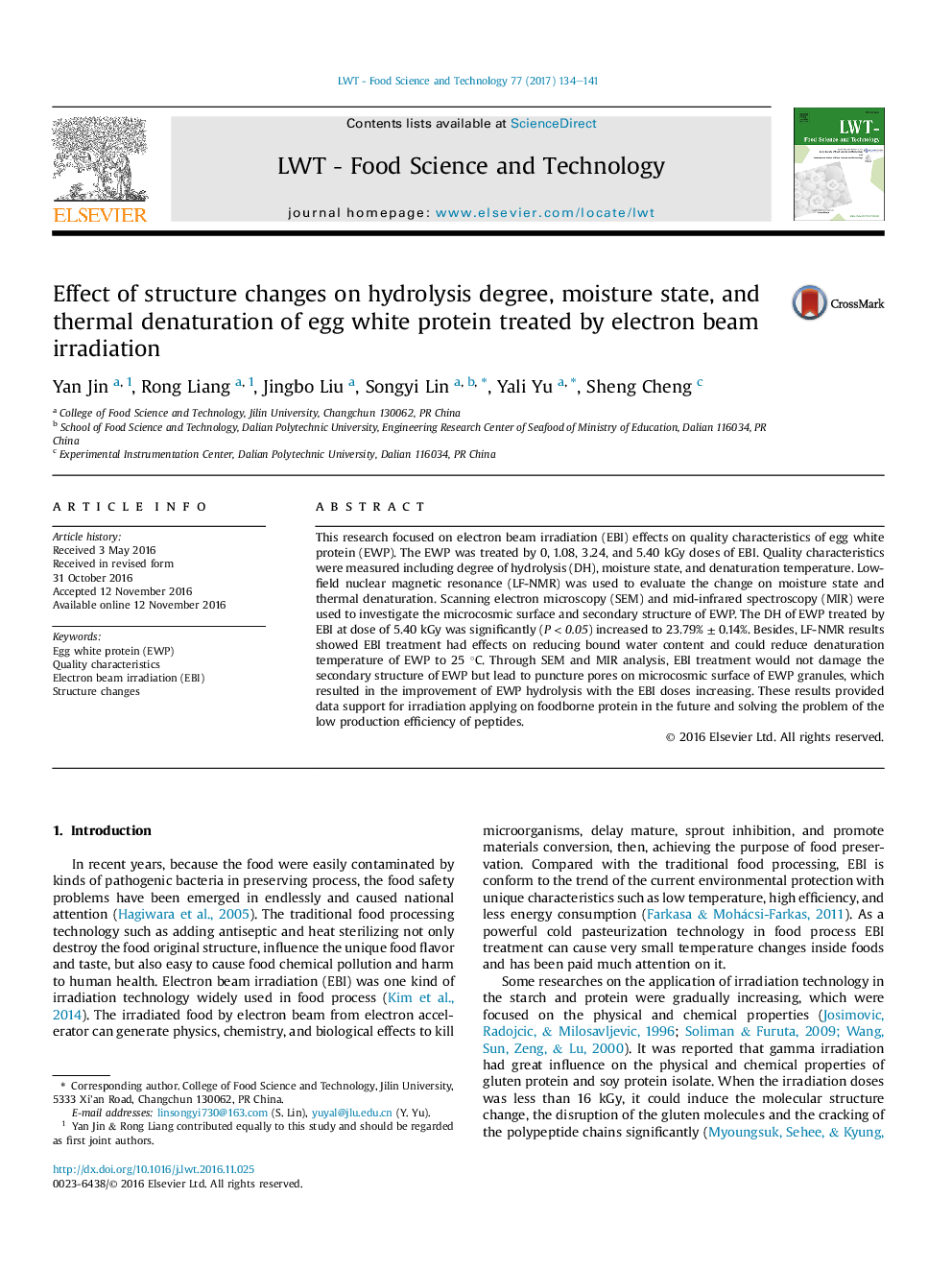| Article ID | Journal | Published Year | Pages | File Type |
|---|---|---|---|---|
| 5768847 | LWT - Food Science and Technology | 2017 | 8 Pages |
â¢EBI treatment was applied on egg white protein (EWP) for the first time.â¢The degree of hydrolysis (DH) of EWP was increased with the doses increasing.â¢EBI treatment had effect on the decrease of bound water in EWP.â¢EBI treatment could promote the denaturation of EWP by using LF-NMR.â¢EBI treatment didn't damage the secondary structure of EWP.
This research focused on electron beam irradiation (EBI) effects on quality characteristics of egg white protein (EWP). The EWP was treated by 0, 1.08, 3.24, and 5.40 kGy doses of EBI. Quality characteristics were measured including degree of hydrolysis (DH), moisture state, and denaturation temperature. Low-field nuclear magnetic resonance (LF-NMR) was used to evaluate the change on moisture state and thermal denaturation. Scanning electron microscopy (SEM) and mid-infrared spectroscopy (MIR) were used to investigate the microcosmic surface and secondary structure of EWP. The DH of EWP treated by EBI at dose of 5.40 kGy was significantly (P < 0.05) increased to 23.79% ± 0.14%. Besides, LF-NMR results showed EBI treatment had effects on reducing bound water content and could reduce denaturation temperature of EWP to 25 °C. Through SEM and MIR analysis, EBI treatment would not damage the secondary structure of EWP but lead to puncture pores on microcosmic surface of EWP granules, which resulted in the improvement of EWP hydrolysis with the EBI doses increasing. These results provided data support for irradiation applying on foodborne protein in the future and solving the problem of the low production efficiency of peptides.
